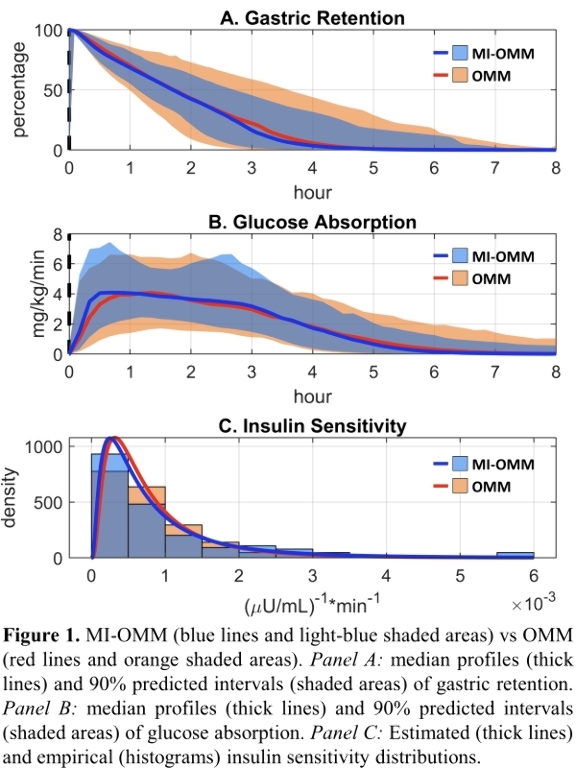
Presenter of 1 Presentation
REAL LIFE ESTIMATION OF POSTPRANDIAL GASTRIC RETENTION, GLUCOSE ABSORPTION AND INSULIN SENSITIVITY IN TYPE 1 DIABETES USING MINIMALLY INVASIVE TECHNOLOGIES AND COMPUTATIONAL MODELING
Abstract
Background and Aims
Understanding the effect of meal composition on glucose excursion would be key in designing decision support systems (DSS) for type 1 diabetes (T1D) management. In fact, the amount of carbohydrates, lipids and proteins in a meal significantly affects postprandial gastric retention (GR), glucose absorption (GA) and insulin sensitivity (SI). Such variables can be estimated, in hospitalized setting, from plasma glucose and insulin data using the Oral Minimal Model (OMM, Dalla Man et al., 2002). Here, we developed a model to estimate those quantities in daily life conditions, using minimally invasive technologies (MI-OMM), and validated it against OMM.
Methods
Data collected from 47 patients with T1D (weight=77±10kg, age=41±13yr) in a closed loop clinical trial (Luijf et al., 2013) were used for model development and validation. Each participant underwent three randomized 23-hour visits (one open- and two closed-loop), during which plasma glucose and insulin were frequently collected, together with continuous glucose monitoring (CGM) and insulin pump (IP) data.
MI-OMM was identified from CGM and IP data using a Bayesian maximum a posteriori estimator, while OMM, identified from plasma glucose and insulin data, was used as reference.
Results
Both models fitted the data well and provided precise parameter estimates. Estimated GR, GA, and SI, obtained with the two methods, are compared in Figure 1.

Conclusions
MI-OMM provided accurate estimates of GR, GA and SI using CGM and IP data. Therefore, it is usable to assess the effect of meal composition on those quantities in daily life conditions and potentially exploitable in DSS for T1D management.
